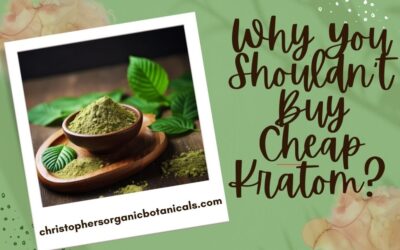Understanding the APHA Botanical Safety Handbook Entry on Kratom
The American Herbal Products Association (AHPA) has been a prominent advocate for the responsible and sustainable use of herbal products. With a mission to promote the herbal industry while ensuring the safety and efficacy of herbal products, the AHPA’s publications and classifications carry significant weight in the industry. Today marks a significant milestone as the AHPA BSH (Botanical Safety Handbook) Kratom entry goes live, offering a comprehensive review of kratom leaf and its uses.
Kratom Leaf Classification by AHPA
In their review, the American Herbal Products Association has classified kratom leaf under several important safety and interaction categories. These classifications are crucial for consumers, healthcare providers, and the herbal industry at large. Let’s delve into these classifications and what they mean:
1. Safety Class 2b & 2c.
Safety Class 2b: This classification indicates that kratom should not be used during pregnancy. The potential risks to fetal development make it imperative for expecting mothers to avoid kratom.
Safety Class 2c: This classification extends the precaution to nursing mothers. Kratom should not be used while nursing, as its components can be transferred through breast milk, potentially affecting the infant.
2. Interaction Class B.
This classification denotes that kratom is a herb for which clinically relevant interactions are biologically plausible. This means that kratom may interact with other drugs or supplements, and such interactions could have significant health implications.
The Importance of AHPA’s Classifications
The classifications provided by AHPA are not arbitrary. They are based on a thorough review of existing literature, including pharmacological and toxicological profiles, clinical investigations, and case reports of adverse effects. The AHPA’s decision to publish these classifications for kratom is a landmark moment, highlighting the organization’s commitment to public health and safety.
Comparison with Other Well-Known Herbs
Kratom’s classifications are similar to those of other well-known herbs. For instance:
Goldenseal (Hydrastis canadensis): Like kratom, goldenseal is not recommended for use during pregnancy due to its potential to affect fetal development.
Boswellia (Boswellia serrata)* Another herb that shares a similar classification, emphasizing the need for caution among pregnant and nursing women.
Oshá (Ligusticum porteri): Classified similarly, oshá also requires caution during pregnancy and nursing.
Additionally, herbs such as American ginseng (Panax quinquefolius), ginkgo (Gingko biloba), and ginger (Zingiber officinale) are noted for possible drug and supplement interactions, underscoring the importance of understanding herb-drug interactions.
The Journey to Publication
The journey to this publication has been a rigorous one. Initially, there was uncertainty about whether the American Herbal Products Association would be able to publish something on kratom due to the complex nature of the herb and the mixed opinions surrounding its use. However, the persistence and dedication to thorough research and review have led to this significant achievement.
Kratom’s Pharmacological and Toxicological Profile
Kratom (Mitragyna speciosa) is a tropical tree native to Southeast Asia, particularly Thailand, Malaysia, and Indonesia. The leaves of the kratom tree have been used traditionally for their stimulant ike effects. The primary active compound in kratom are mitragynine.
Pharmacological Effects
- Stimulant Effects: At lower doses, kratom tends to have stimulating effects, increasing alertness, energy, and sociability.
- Relaxing Effects: At higher doses, kratom produces relaxing effects, which can help with management of symptoms.
Toxicological Concerns
The toxicological profile of kratom is complex. While it has been used traditionally with anecdotal reports of benefits, modern use has raised several concerns:
Addiction and Dependency: People are afraid that kratom has the potential for addiction and dependency. Regular users may develop a tolerance, leading to increased consumption and risk of dependence.
Kratom Abuse Potential 2021: An Updated Eight Factor Analysis is a great resource to show Kratom’s Abuse Potential.
Adverse Effects: Reported adverse effects include nausea, vomiting, and constipation.
Interactions with Other Drugs: Kratom’s interaction with other medications, particularly those metabolized by the liver, can lead to unpredictable effects and potential toxicity.
Clinical Investigations and Case Reports
The AHPA’s review includes clinical investigations and case reports that document both the benefits and risks associated with kratom use. These studies are critical in understanding the full spectrum of kratom’s effects and guiding safe usage.
Case Reports: There have been numerous case reports of adverse effects linked to kratom, ranging from mild symptoms to severe health crises, including fatalities. These reports highlight the need for caution and responsible use.
Clinical Studies: Clinical studies provide insights into kratom’s efficacy and its effects. However, these studies also underscore the importance of understanding dosage, potential interactions, and individual variability in response to kratom.
Responsible Use and Future Directions
The AHPA’s publication serves as a guide for responsible use of kratom. It emphasizes the need for consumers to be aware of the potential risks, especially concerning pregnancy, nursing, and interactions with other substances. Healthcare providers are encouraged to consider these classifications when advising patients on herbal supplement use.
Advocacy and Education
The AHPA continues to advocate for the responsible use of herbal products, including kratom. Education is a key component of their mission, aiming to inform both consumers and healthcare providers about the safe and effective use of herbs.
Conclusion
The AHPA’s BSH kratom entry is a pivotal moment in the understanding and regulation of kratom. By classifying kratom under specific safety and interaction categories, the AHPA provides crucial guidance for its use. This landmark publication underscores the importance of thorough research and informed decision-making in the herbal industry.
As the herbal product industry evolves, the AHPA’s role in promoting safety and efficacy remains indispensable. The publication of the kratom entry in the BSH handbook is a testament to the AHPA’s commitment to advancing the responsible use of herbal products. For consumers and healthcare providers alike, this entry serves as a valuable resource in navigating the complex landscape of herbal supplements.
Understanding the classifications and their implications can help ensure that kratom is used safely and responsibly, minimizing risks and maximizing potential benefits. The AHPA’s efforts in this regard are commendable and mark a significant step forward in the herbal product industry.






0 Comments